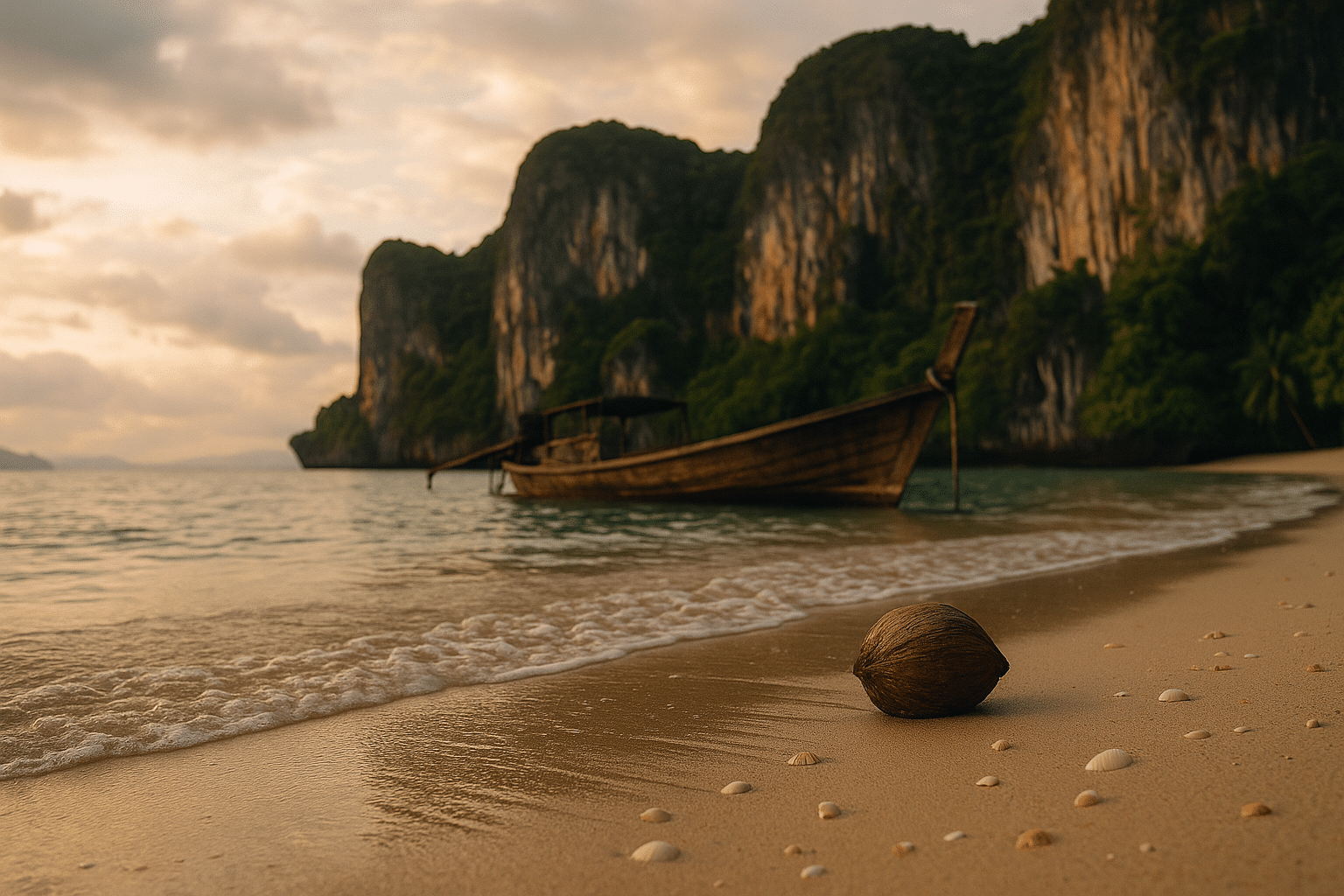
Smart Planning for a Summer Vacation in Thailand: All‑Inclusive Resorts and Affordable Flights from the USA
Why a Summer Vacation in Thailand Is Worth Your Shortlist
Thailand rewards summer travelers with lush landscapes, warm seas, and compelling value. While parts of the country experience seasonal showers, the mid-year period often aligns with reduced room rates, fewer crowds at marquee sights, and a more relaxed pace on beaches and in cities alike. For families, couples, and solo travelers, that combination can translate to more experiences for a similar budget compared to peak winter months.
To set clear expectations, Thailand’s climate varies by region. The southwest monsoon influences the Andaman coast (for example, Phuket and Krabi) more heavily in summer, bringing intermittent rain that typically arrives in bursts rather than all-day downpours. The Gulf coast (for example, Koh Samui and nearby islands) often enjoys more favorable summer conditions, with sunnier breaks and calmer seas. Inland destinations—north and central regions—see warm temperatures punctuated by showers that refresh the air and green the rice paddies.
Before diving into details, here is a brief outline of what this guide covers:
– Planning considerations for a summer trip and why the season can offer strong value
– How to choose an all-inclusive resort in Thailand that aligns with your style and budget
– Strategies to find cheap flights from USA gateways, including timing and routing insights
– A practical sample itinerary that mixes culture, coast, and downtime
– Budgeting, safety, etiquette, and sustainability tips to wrap up your planning
Why it matters now: airfare volatility remains a factor in long-haul travel, and accommodation pricing shifts quickly with demand. By understanding regional weather nuances, the value proposition of an all-inclusive stay, and realistic airfare strategies, you can make confident choices. Picture it: a sky rinsed clean after a brief shower, the scent of lemongrass drifting from a beachside grill, and waves pressing a soft rhythm into the shore. That’s the tone of a well-timed summer escape—one that favors flexibility and rewards curiosity.
Key advantages of a summer itinerary include:
– More availability at sought-after properties and tours
– Potentially lower nightly rates and fewer minimum-stay restrictions
– Easier restaurant reservations and shorter queues at heritage sites
– Lush scenery for photography, from waterfall-fed forests to emerald karst formations
In short, a summer vacation in Thailand can be both relaxing and cost-conscious, provided you plan around microclimates, build in flexible beach days to accommodate passing showers, and map your flights with a realistic understanding of routes and connection patterns. The following sections unpack each of these elements in detail.
Choosing an All-Inclusive Resort in Thailand: What’s Included and What to Compare
All-inclusive offerings in Thailand range from serene beachfront retreats to secluded jungle hideaways and urban sanctuaries with resort amenities. Inclusions typically span daily breakfast and at least one additional meal, non-motorized water sports, fitness facilities, and periodic cultural activities such as fruit carving, Thai dance demonstrations, or language mini-lessons. Higher-tier packages may add airport transfers, spa credits, premium drink selections, and guided excursions.
When comparing options, look at the structure of the package rather than the headline rate. Questions to ask include:
– Are all meals included, or only breakfast and dinner?
– Which beverages are covered, and are there time or venue limitations?
– Are children’s clubs, babysitting, or teens’ lounges included or surcharge-based?
– What activities are complimentary compared with those that carry a fee?
– Does the package include airport transfers or island boat transfers?
Regional fit matters. On the Andaman coast, summer seas can be choppier, so prioritize properties with sheltered coves, expansive pools, and robust on-site activities. Along the Gulf coast, calmer water often favors beach time and offshore snorkeling. Inland, hillside resorts near northern cultural hubs trade beaches for cool morning breezes, hiking trails, cooking classes, and access to night markets.
Pricing varies by location, season, and inclusions, but many travelers find mid-range all-inclusive packages in summer starting near the lower hundreds per room per night, with premium, villa-style stays priced higher. The value emerges when you tally meals, activities, and transfers. For wellness-focused travelers, look for packages that include daily yoga, steam or sauna access, and discounts on massages; for families, prioritize splash zones, supervised play programs, and larger room categories.
Many travelers search for the convenience implied by the phrase Summer vacation in Thailand with all inclusive resort and direct flights from USA. It is helpful to remember that in airline terminology, “direct” can sometimes include a stop while keeping the same flight number. In practice, travelers from the United States often find efficient one-connection itineraries through major international hubs. We will unpack flight strategies in the next section so expectations match reality and your package timing aligns with likely arrival windows.
Finally, review policy fine print. Flexible cancellation terms, date-change allowances, and clear weather-related policies can protect your plans during a season with passing showers. Ask about sustainability measures too—reduction of single-use plastics, reef-safe sunscreen initiatives, wastewater treatment, and community employment—so your stay supports local ecosystems and livelihoods.
How to Find Cheap Flights from USA: Timing, Routes, and Practical Tactics
Securing cheap flights from USA gateways to Thailand hinges on three factors: timing, routing, and flexibility. Summer shoulder periods—often late May to early June and late August into September—can yield lower fares compared with mid-July peaks. For long-haul international trips, many travelers see value when booking roughly 2–5 months in advance, though shoulder-season deals can appear closer in if demand softens.
Routing typically involves one connection each way via major international hubs. From the West Coast, total travel time can range from roughly 18 to 22 hours depending on layovers; from the Midwest and East Coast, 20 to 26 hours is common. As a planning benchmark, economy fares in off-peak windows frequently land in a broad band that can range from the high hundreds to low thousands of dollars round-trip, with premium economy and business-class fares scaling up accordingly. Prices fluctuate with fuel costs, school calendars, and global events, so setting alerts and watching a few weeks’ worth of trends can pay off.
Practical tactics to uncover stronger value include:
– Search flexible date ranges spanning at least seven days on either side of your target departure
– Consider alternative U.S. departure airports within a reasonable drive if they commonly price lower
– Fly midweek when feasible, as Tuesdays and Wednesdays often show less demand
– Evaluate overnight layovers that shorten total travel time the next day or reduce fare costs
– Check whether flying into one Thai airport and out of another improves the price or routing
When browsing air options, note the distinction between “nonstop” and “direct.” Nonstop means no intermediate stops; direct can retain the same flight number yet still make a stop. While some travelers hope for nonstop service, many U.S.–Thailand itineraries currently involve at least one connection. Align your resort check-in with likely arrival times: overnight departures from the U.S. commonly lead to late-night or early-morning arrivals two calendar days later due to time-zone shifts.
For those optimizing total trip cost, pair airfare monitoring with accommodation flexibility. If a fare dip appears for a set of dates, contact your resort to confirm availability and promotional inclusions—such as transfers or dining credits—before you purchase tickets. Conversely, if you lock in a strong all-inclusive offer first, use flight alerts centered on those fixed dates to capitalize on short-term fare drops. With a bit of patience and a willingness to consider nearby airports and day-of-week adjustments, many travelers secure both sensible routings and competitive prices.
A Balanced Sample Itinerary: Culture, Coast, and a Weekend on the Islands
A 9–12 day plan provides enough time to taste city life, decompress at an all-inclusive resort, and explore famed limestone seascapes. Start with the capital for temples, street food, and markets; continue to a coastal resort for built-in convenience; and add a short island hop for photogenic bays and gentle snorkeling. Additionally you can have a weekend on the Phi Phi islands, which are reachable by scheduled ferries and speedboats from nearby mainland piers.
Days 1–3: City immersion. After your long-haul flight, take a light day to reset. Explore major temples and historic neighborhoods early in the morning for cooler temperatures. In the evening, browse night markets for snacks and crafts. Consider a guided food walk to sample regional dishes or a canal boat tour for a different perspective of the waterways. Keep at least one afternoon open for a museum or contemporary art space, and another for a traditional massage to relieve jet lag.
Days 4–7: All-inclusive resort downtime. Transfer to the coast and settle into your package inclusions. Build a rhythm of morning swims, mid-day spa sessions or naps during any passing showers, and late-afternoon beach walks. Incorporate cultural workshops if offered: fruit carving, Thai language basics, or cooking classes. If seas are calm, add a short offshore snorkeling trip; if not, lean into on-site activities like yoga, fitness, and kids’ clubs. Photograph sunsets when the sky often glows after brief rain bursts.
Days 8–10 (or 8–12): Island weekend. Ferry schedules to the Phi Phi archipelago vary by season; crossings often take 1.5–2 hours from mainland piers, and seas are typically smoother early in the day. On arrival, spend an afternoon exploring viewpoints and quieter coves. The next day, snorkel sheltered bays; bring reef-safe sunscreen and avoid touching coral. For a calmer experience, hire a small local boat for sunrise or late-afternoon hours when light is magical and heat subsides. Plan your return to the mainland with buffer time for possible weather delays, and position yourself near your departure airport the night before your international flight.
Throughout the itinerary, keep alternatives ready. If a rain band moves through, shift boat trips to spa time or a cooking class. If the sea looks glassy, seize the window for snorkeling. That agility helps you make the most of summer’s charms: saturated greens, fragrant markets after showers, and dramatic cloudscapes over jade water.
Budget, Safety, Sustainability, and Final Takeaways
Budgeting for a summer trip involves three pillars: airfare, accommodation, and daily expenses. For flights, monitor fares for several weeks to understand the prevailing range, then act when your target price appears. For all-inclusive stays, compare what you would realistically spend on meals and activities if paying à la carte—packages often deliver strong value when you plan to dine on-site and use resort amenities daily. Daily expenses will vary by destination; urban areas and remote islands can price higher than secondary towns, while local cafés and markets generally offer affordable meals.
To stretch value without sacrificing experiences:
– Eat like a local at market stalls and small restaurants during city days
– Use public ferries and shared transfers where practical
– Prioritize experiences with high memory-per-dollar value, such as guided food walks or cultural workshops
– Allocate a contingency fund for spontaneous opportunities, like a sunrise boat hire after overnight storms clear
Safety fundamentals are straightforward: carry a copy of your passport, use hotel safes, and keep valuables discreet. During rainy spells, wear shoes with grip on slick temple steps or boat piers. At beaches, heed local advisories about currents, and consider travel insurance that covers medical care and weather-related adjustments. In cities and villages, a respectful greeting and modest dress in sacred sites go a long way. Learn a few polite phrases—simple hellos and thank-yous add warmth to interactions.
Sustainability enhances the trip for you and the destination. Opt for reef-safe sunscreen, refill water bottles where filtered stations are available, and support tours that demonstrate clear environmental practices. Ask your resort about waste reduction, responsible seafood sourcing, and community partnerships. When snorkeling, float above coral rather than standing; when hiking, stay on marked trails and pack out any litter.
Final takeaway for U.S. travelers: a thoughtfully planned summer itinerary can weave convenience and discovery into a single arc. An all-inclusive stay simplifies daily choices, while a city introduction and a short island hop add range and depth. If your initial vision is a Summer vacation in Thailand with all inclusive resort and direct flights from USA, pair that aim with realistic routing—most travelers will find smooth one-connection options—and you will set expectations that match real-world schedules. With flexible planning, weather-savvy timing, and an eye for local culture, your summer journey can feel both unhurried and full of color—like the horizon after a passing storm, brighter for the rain that came before.


